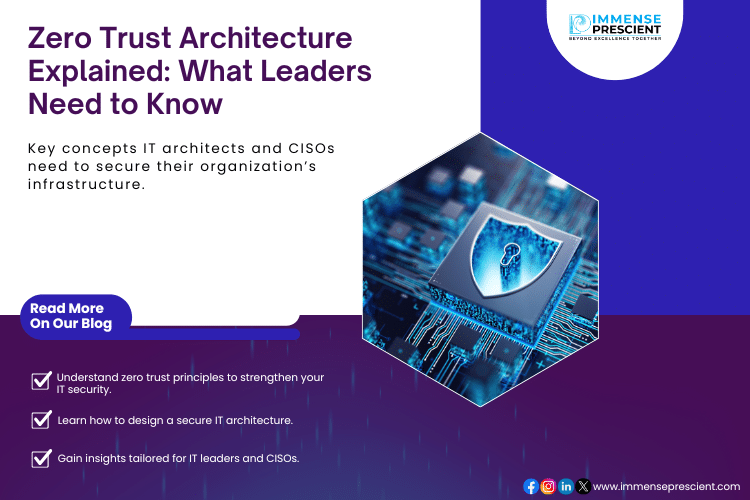Zero Trust Architecture Explained: What Leaders Need to Know
Introduction: Zero Trust Architecture Explained
In today’s hyperconnected world, traditional perimeter-based security models are no longer enough. High-profile breaches show that attackers often exploit trusted internal networks. Enter Zero Trust Architecture (ZTA) a security model that assumes no user or device is trustworthy by default. For business leaders, understanding Zero Trust is no longer optional; it’s a strategic imperative.
If you’re exploring how cybersecurity fits into broader business strategy, check out our article Cybersecurity Is a Business Problem, Not Just an IT Problem for a leadership perspective.
What Is Zero Trust Architecture?
Zero Trust Architecture shifts security from the network perimeter to each user, device, and resource. The principle is simple: “never trust, always verify.” This means every access request is continuously authenticated, authorized, and encrypted, regardless of whether it originates inside or outside the network.
Key principles include:
- Continuous Verification: No implicit trust for devices or users.
- Least Privilege Access: Users get only the access they need.
- Micro segmentation: Breaking networks into smaller segments to limit lateral movement.
- Adaptive Policies: Using real-time analytics and threat intelligence to adjust access.
Why Leaders Should Care About Zero Trust
Zero Trust is not just an IT issue; it’s a business resilience issue. According to research by Gartner, organizations that adopt Zero Trust reduce their security incidents and improve compliance posture.
For leaders, ZTA offers:
- Improved Risk Management: Minimizes the blast radius of breaches.
- Regulatory Compliance: Supports data privacy and compliance requirements like GDPR and HIPAA.
- Faster Cloud Adoption: Builds trust across hybrid and multi-cloud environments.
For a broader look at how digital trust affects the next decade of business, read Digital Trust Will Define the Next Decade of Business.
Steps to Begin Your Zero Trust Journey
- Assess Current Security Posture
Conduct a gap analysis to identify where your security controls rely on implicit trust. - Start with Identity & Access Management
Implement strong MFA, role-based access, and continuous monitoring. - Segment Your Network
Deploy micro segmentation to contain lateral movement of attackers. - Invest in Visibility & Analytics
Use tools to monitor behaviour, detect anomalies, and adjust policies dynamically. - Educate and Align Leadership
Make Zero Trust a board-level priority to ensure adequate budget and support.
Conclusion: Building a Zero Trust Future
Zero Trust Architecture is more than a technology trend it’s a mindset shift. For leaders, adopting Zero Trust means safeguarding intellectual property, customer data, and operational continuity. By embedding Zero Trust principles into your security strategy, you’re investing in the long-term resilience of your organization.




